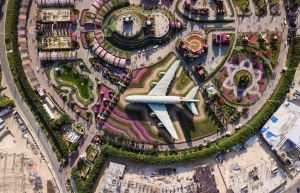
Dubai Global Village 2025 Season 30 Is Here – Dates, Tickets & What’s New
Dubai Global Village is back, and this year is extra special! The 30th season is about to kick off in October 2025, marking a major anniversary milestone for one of Dubai’s most beloved attractions. Over the years, Global Village has transformed into a cultural phenomenon that draws millions of visitors with its mix of 90 world pavilions, live shows, food from every corner of the globe, and family-friendly fun. So, what can you expect this season? From the official dates and ticket details to the newest attractions and insider tips, this guide has everything you need to make the most of Global Village 2025 – Season 30. Mark Your Calendar: Dubai Global Village 2025 Dates & Timings Revealed The countdown has begun! Dubai Global Village Season 30 will officially open in October 2025 – seven months of culture, shopping, performances, and family fun at one of Dubai’s most anticipated attractions. The season will commence on October 15, 2025, and run through May 10, 2026, offering visitors plenty of time to explore the vibrant attractions. And the timings? On weekdays, the Village is full of life from 4 PM to 12 AM. Need more time? Then visit on weekends and public holidays when the excitement lasts an hour longer, till 1 AM. Tuesdays have always remained reserved for families and ladies, except on public holidays. Special occasions bring even more magic to Global Village. During special occasions like New Year’s Eve, the UAE National Day, and Ramadan, the hours may vary. The Village transforms itself to match the festive atmosphere. Pro Tip: Want to enjoy Global Village at a slower pace with fewer crowds? Then, the best time for you to visit is on weekdays during the early evening or in the first few weeks of the season before the holiday rush begins. Global Village Season 30 Tickets: Everything You Need to Know Getting your tickets for Dubai Global Village Season 30 is easier than ever, but here’s the important part – official tickets will only be released on the Global Village website and app in October 2025. Till then, stay safe from scammers offering fake tickets and VIP passes. This spectacle is definitely worth the wait! Are you looking for a premium experience at the event to enjoy with your family? We suggest you keep an eye out for the VIP and family packages. These premium packages include restaurant reservations, reserved parking, priority access to rides and games, and much more. Worried about scammers? Well, fear no more. Protect your pockets by booking your Global Village 2025 tickets with Thrillark. The Global Village has always been an inclusive space. This is why children under 3, seniors above 65, and People of Determination enjoy complimentary entry. Planning to drive there? Parking fees and bundled ticket options will be confirmed closer to the opening day. Checking the official website regularly in October is your best bet to secure tickets early and enjoy a smooth entry without long queues. What’s New in Global Village Season 30? Dubai’s Global Village is going all out to celebrate its 30th anniversary this season, bringing visitors an exciting mix of new attractions, shows, and experiences. To mark three decades of success, the park will feature grand 30th-anniversary installations and decorations, spreading a festive vibe across the park. Guests can also delight in special shows and performances that celebrate the rich cultural heritage of all participating countries, making this season truly memorable. Like always, visitors are hoping to be witnesses to Global Village’s saga of setting Guinness World Records, so why not be a part of it? These events not only entertain but also celebrate community and cultural unity, making your visit even more special. The revamped Carnival rides will definitely be a favorite among thrill seekers, with their new attractions for both kids and adults. From spinning rides to fun games, the enhanced zone promises endless entertainment and excitement for the whole family. If you are a foodie, don’t worry. Global Village has something for you, too. Food lovers are in for a treat with new dining zones and street food concepts. Savor authentic flavors from around the globe, join interactive cooking demonstrations, and explore food festivals that highlight international culinary traditions. Stay tuned as more surprises, interactive experiences, and attractions are revealed in the run-up to the October 15, 2025, grand opening. A World of Pavilions & Culture in One Place The vibrant cultural pavilions of the Global Village have always been a magnetic force that pulls its visitors each time they visit – Season 30 will be no different. This year, the festival is expected to feature over 90 countries, each showcasing its unique traditions, products, and performances under one open-air roof. From the colorful India Pavilion filled with spices, textiles, and Bollywood vibes to the futuristic displays at the UAE Pavilion, the cultural journey is definitely going to be both immersive and unforgettable. Don’t miss out on Turkey’s pavilion, famous for its sweets and handwoven crafts, or the lively Thailand Pavilion, where street markets and exotic décor bring Southeast Asia to life. The Africa Pavilion is another must-visit, with its bold prints, music, and artisan crafts that reflect the continent’s diverse heritage. Season 30 is also going to be a debut platform for many new countries, with details yet to be revealed as the opening approaches. With them follow fresh flavors, art, and experiences, making this milestone year extra exciting for regular visitors. Are you ready to witness a burst of culture and festivities? The World on Your Plate: Food at Global Village 2025 Imagine wandering through lanes filled with street food from around the world, where every step tempts you with sizzling grills, freshly baked treats, and aromatic spices. Well, don’t just imagine because this is exactly what the Global Village offers you. From shawarmas and Turkish kebabs to Thai noodles and Indian chaat, it’s a global dining adventure under Dubai’s sky. Each season, foodies are surprised by mouthwatering additions to the










